What is this CURE: There are two sections of Organic II CUREs.
Dr. Allen’s students will design and synthesize non-natural amino acids that change their fluorescence output in response to changes in acidity. Proteins containing the amino acids will be added to heart cells to determine how lowered blood pH damages cardiac tissue.
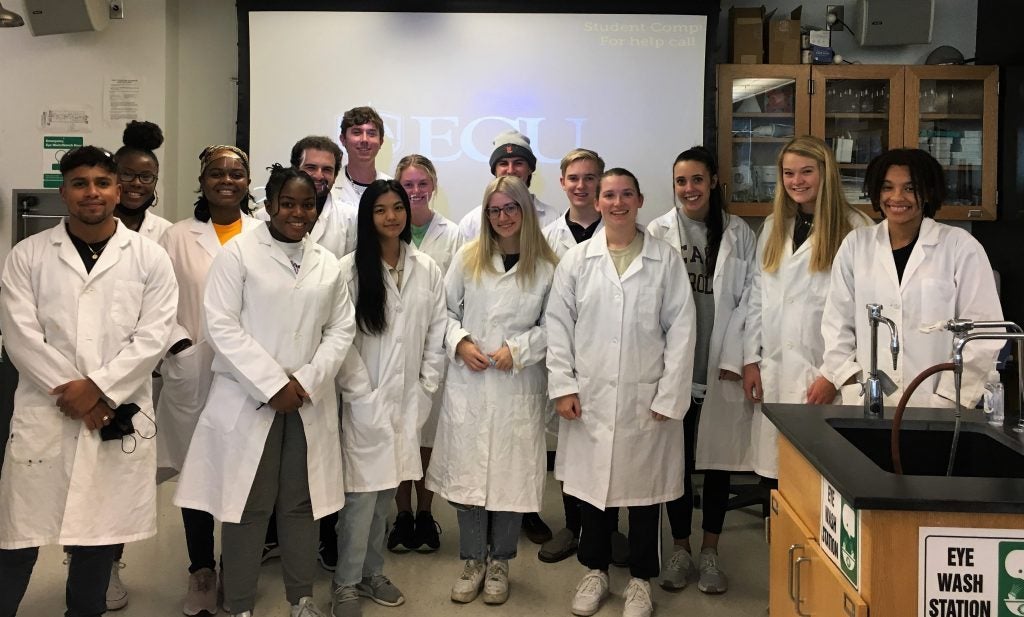
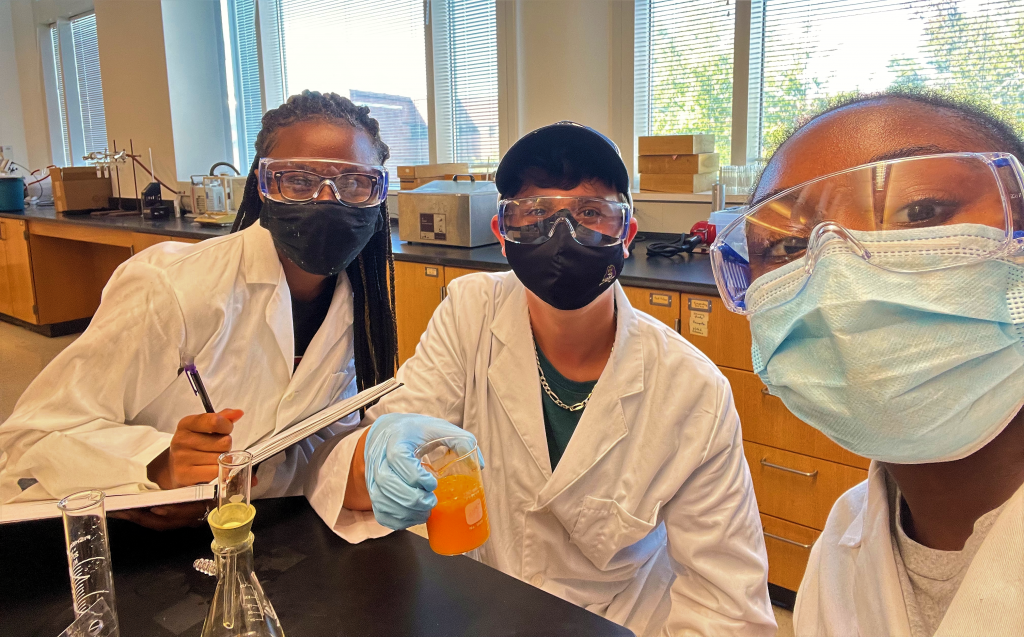
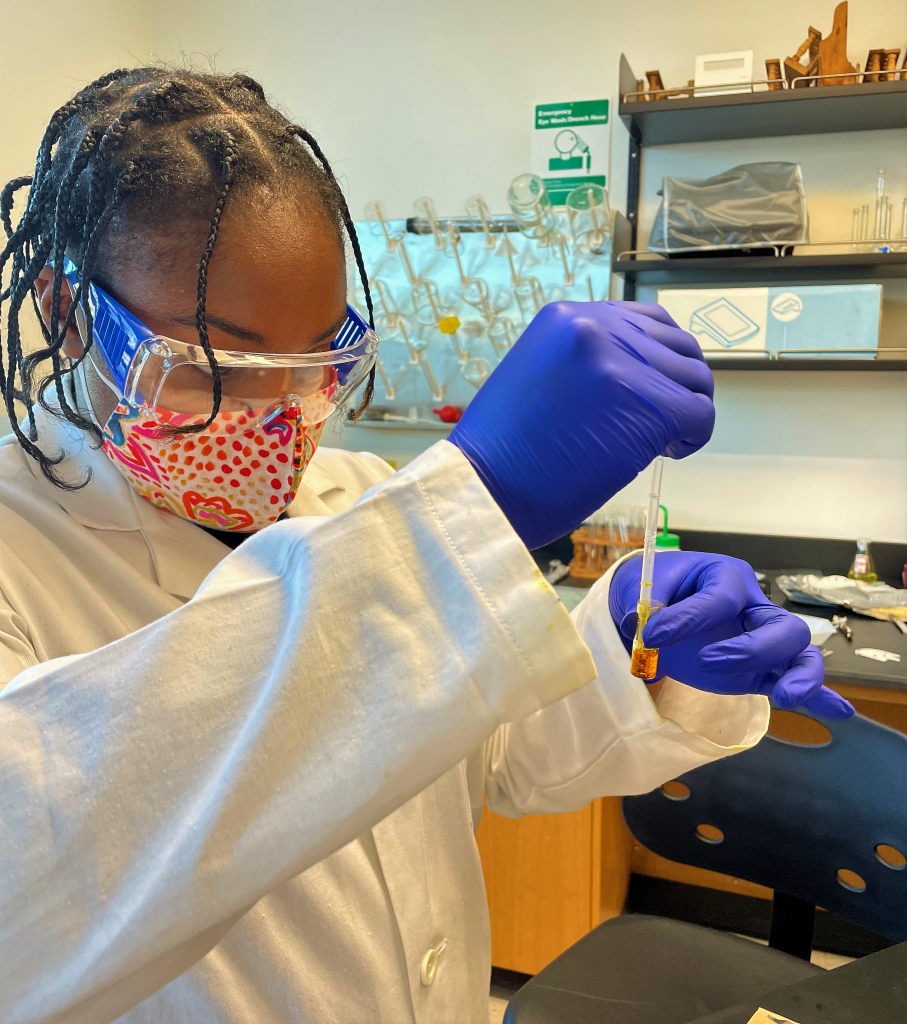
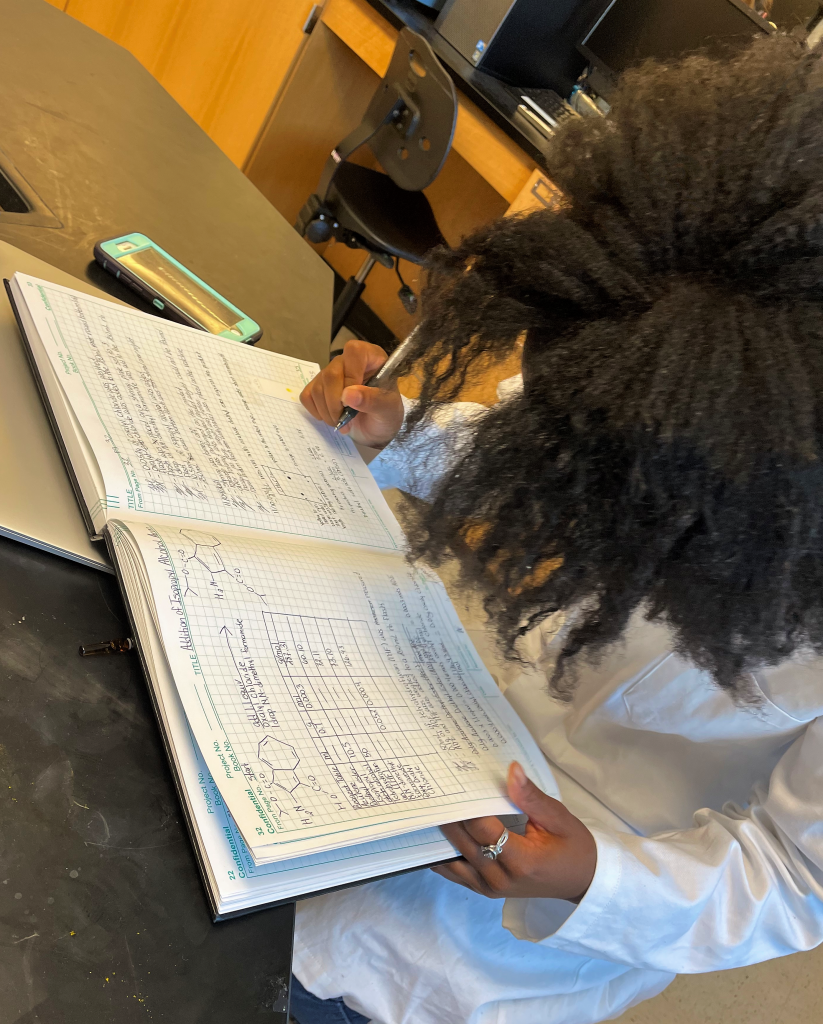
Dr. Hughes; students are investigating biocatalytic methods for the asymmetric synthesis of pharmaceutical compounds, such as Warfarin. See crystals below!


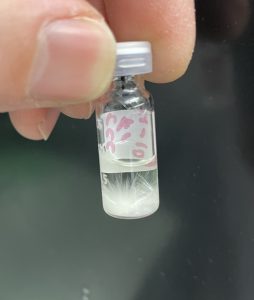
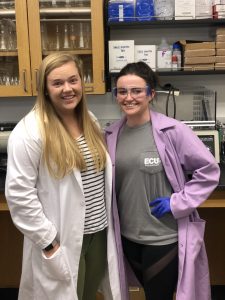
We have 6 teams (3 students per team), that each set out this semester to synthesize their own, never-before-made, fluorescent compounds. So far, each team has been successful at creating at least 1 novel fluorophore, and are in the process of trying to create 1-2 additional new fluorophores. The fluorophores that have been synthesized are derivatives of the compound azulene, a beautiful dark blue-purple fluorophore. Each team was given a variety of different sized alcohols to choose from that they would attach to azulene. We learned that the traditional method of acid-catalyzed transesterification was unsuccessful with each teams chosen alcohol, but was very successful via a base-catalyzed version of the reaction. Some teams have even made new, very useful, compounds by accident, just by experimenting with reaction times and reagent amounts! The incredible enthusiasm each student has for their team’s research is very evident, as their ability to work collectively has grown exponentially, along with their confidence in the lab. Students have expressed their excitement about using the fluorophores they have made this semester in Organic Chem I CURE Lab, next semester in Organic Chem II CURE lab. Next semester, each team will take their new fluorophore(s) and perform a series of experiments that will examine how well they can bind to damaged DNA, ultimately looking to see if their fluorophore (a molecule that is very similar to the DNA base, guanine) could be used as a sensor that detects the sites on a strand of DNA that have been damaged from oxidation. These damaged sites on DNA are known as “abasic sites” and having a sensor that can detect them via fluorescence would be a very useful tool for new therapies aiming to repair abasic sites on DNA.